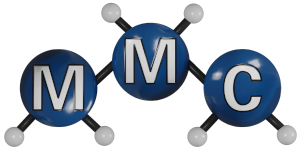Equipment
Spectrometers
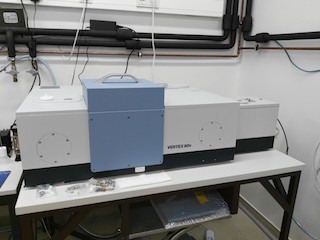
FTIR Spectrometer Bruker Vertex 80v
This is an evacuatable FTIR spectrometer we use to determine the chemical composition of polymer samples, using an array of techniques like absorption measurement, specular reflectance, ATR and others. It covers a large part of the infrared spectrum from NIR to FIR.
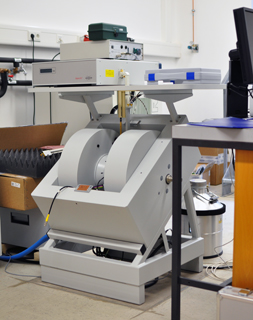
EPR Spectrometer Bruker Elexsys-II 500T
Radicals are the propagating species in many polymerization reactions. Our EPR spectrometer allows us to monitor radical species with high sensitivity and in a time-resolved manner. This is an important tool for elucidating the reaction kinetics and mechanisms of radical polymerization reactions.
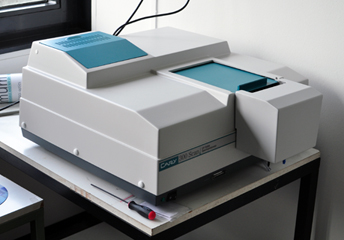
UV/Vis Photospectrometer Agilent Cary 300
Many monomers absorb ultraviolet light. Others might me labeled with chromophores to make them identifiable in microscopy. Our UV spectrometer lets us accurately determine the concentration of species absorbing in the UV and visible regions of the electrmagnetic spectrum.
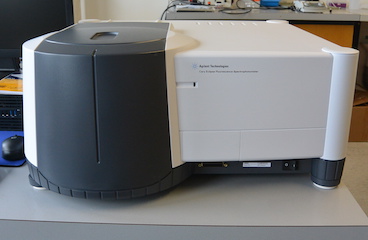
Fluorescence Spectrometer Agilent Cary Eclipse
Advanced microscopic techniques like STED require samples to contain fluorescent labels in the regions of interest. Our small fluorescence spectrometer lets us monitor the labeling process, among other tasks.
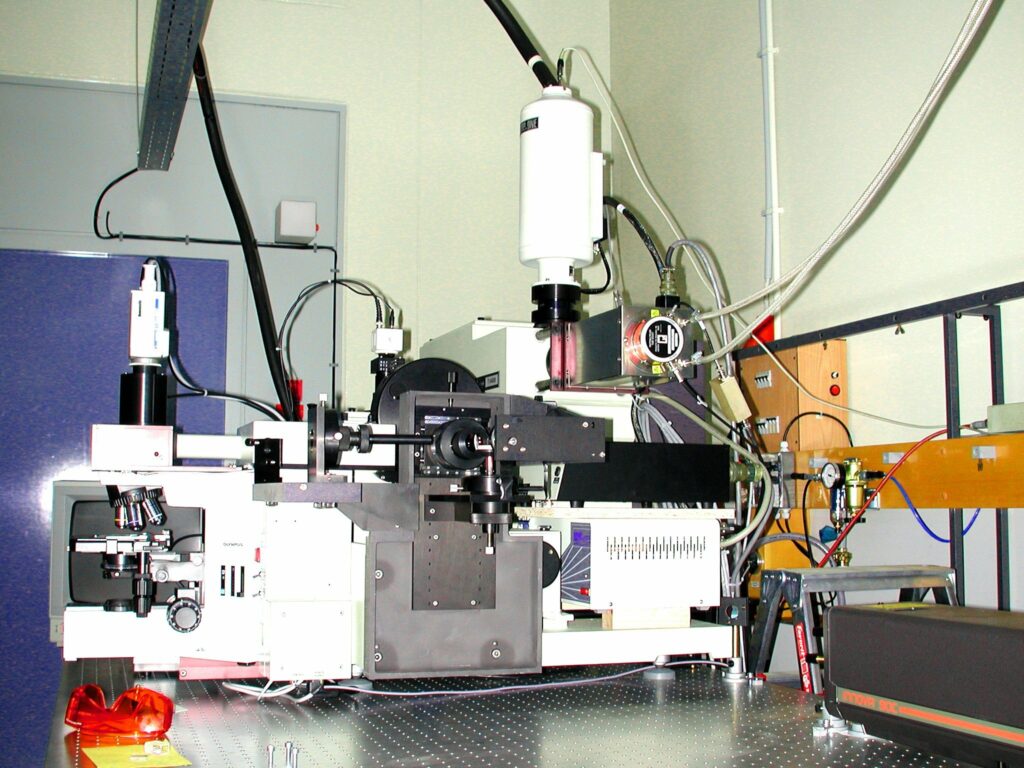
Raman Spectrometer / Microscope
Raman spectroscopy is a tool to look inside a given sample on a molecular level. The detected signal corresponds essentially to the vibrational frequency of molecular bonds: the sample is irradiated with a laser beam which may excite molecular vibrations. The sample, hence, emits scattered light whose frequency is modified by the resonance frequency of the bond. A grating spectrometer analyses the scattered light and the frequencies of the molecular vibrations can be determined.
Our Raman spectrometer is a Jobin-Yvon (Horiba) T64000 with three diffraction gratings, each with 1800 lines per mm allowing maximum possible resolution. The spectrometer can be used in subtractive or in additive mode to achieve highest possible spectral resolution. As detector a liquid-nitrogen cooled CCD camera is used. The optical arrangement can be chosen to be “macro” with a conventional telescope or “micro” with an optical microscope (Olympus BX40) attached to the spectrometer. As excitation source, a red laser with wave length 640 nm with a power of about 500 mW is used. Temperature dependent measurements are possible in both modes. All measurements can be done in automatic sampling using programmed tools.
Microscopes
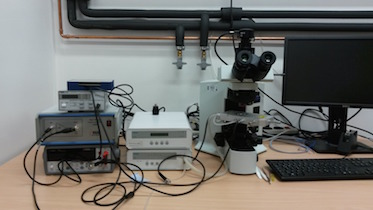
Polarizing Optical Microscope Olympus BX-51
This microcope is used for investigation of comparatively large structures in samples, like crystalline domains, sphaerulites, liquid crystal phases, or large micelles.
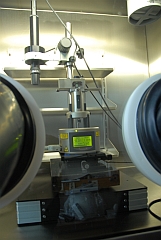
Atomic Force Microscope Bruker Multimode 8
In order to observe stuctures on the nanometer scale, for example the structures formed by microphase separation of block copolymers, we use this atomic force microscope.
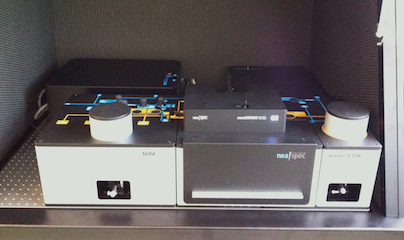
Scattering Near-Field Optical Microscope from neaspec
For more advanced investigations on the nanometer scale, we have an s-SNOM system, which allows us to not only map the sample surface like in an ordinary AFM, but also perform optical measurements on the area unter the probe simultaneously.
Chromatography
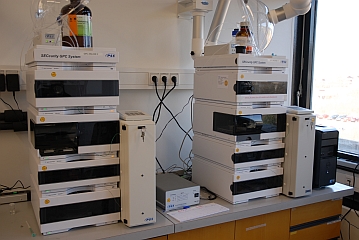
Size Exclusion Chromatography Systems
The molecular mass distribution of our polymer samples is determined routinely via Sized Exclusion Chromatography. For this purpose we have three systems running, which differ in their set of detectors and in solvent used as the mobile phase.
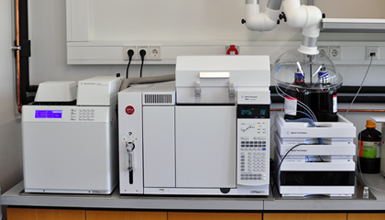
High-Temperature SEC Setup
For polymers that are not readily dissolvable in solvents at ambient temperature, we have a high temperature system that allows us to do SEC measurements even of poorly soluble polymers like polyethylene.
Synthesis and Preparation
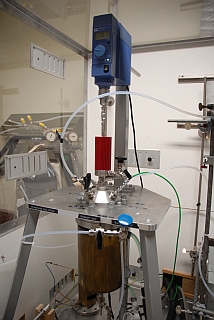
Reactor for Gaseous Monomers
Not all monomers used in research or industry are liquid at ambient temperature. This reactor has been designed for the polymerization of butadiene, which is a gas at ambient temperature.
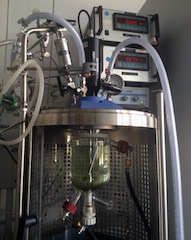
Pressurizable Reactor for Liquid and Gaseous Monomers
This reactor was originally used to do solution polymerization of ethylene, but is quite versatile and may be used for a wide variety of polymerization reactions.
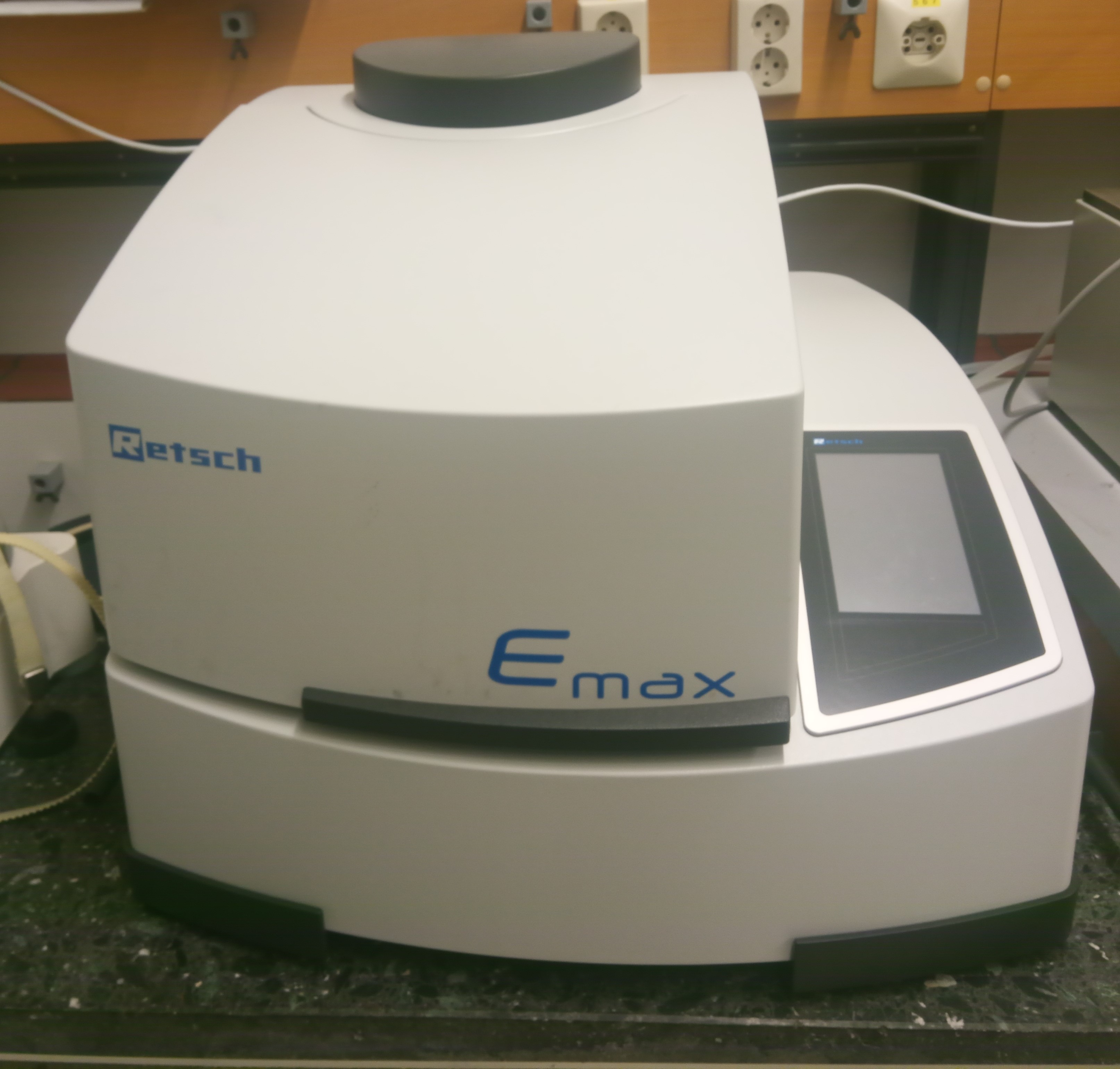
High Performance Ball Mill Retsch Emax
Minerals are often used in industry as filler materials, but some mineral materials also have functionality beyond filling, such as acting a diffusion barrier, like clay minerals, or as a fluorophore, like egyptian blue. All these mineral materials are best used as fine powders, which we can prapare with our high performance ball mill.
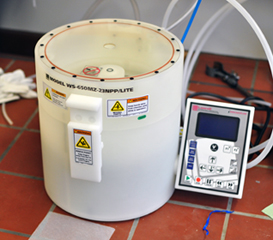
Spincoater Laurell WS-650MZ-23NPP
Characterization of polymers by Atomic Force Microscopy typically is done on samples in the form of a thin film on a substrate. The spincoater allows us to cast very smooth and homogeneous films from polymer solutions.
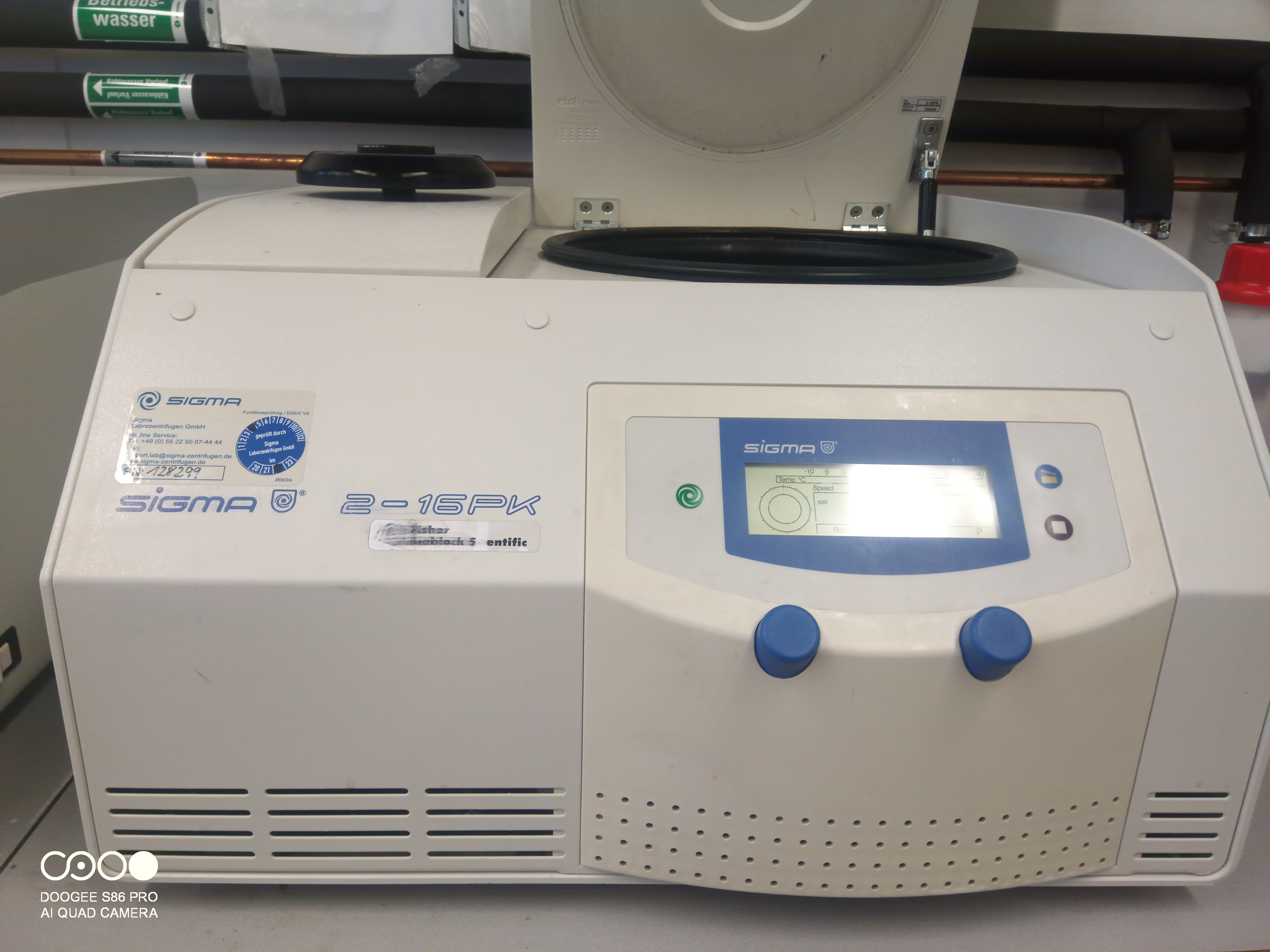
Centrifuges Sigma 2-16PK and Sigma 2-16 KL
Centrifuges are mainly used for separating nanoparticles from their dispersant, or from leftover free polymer in solution. The 2-16PK is temperature controlled.
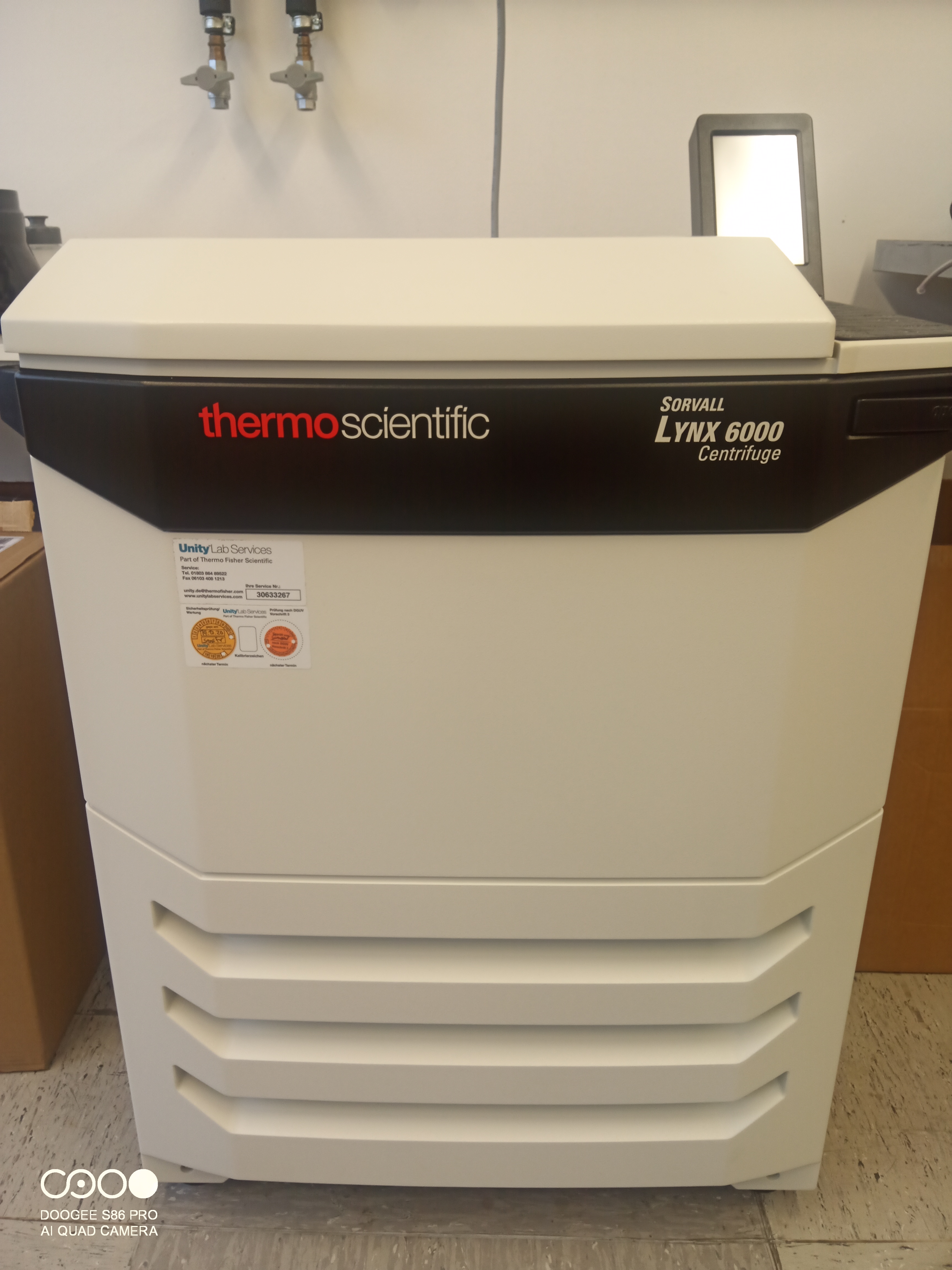
Highspeed Centrifuge ThermoScientific Lynx 6000
For difficult separations, we have a highspeed centrifuge that provides us with accelerations of up to 100,000 g.
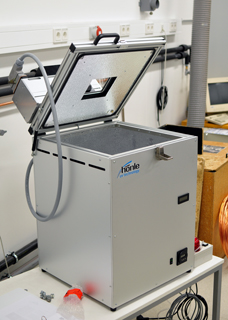
UV Irradiation Chamber Hönle UvaCube
The cross-linking reaction in synthetic resins is often started by ultaviolet light. This chamber is equipped with a powerful UV lamp and can be flooded with inert gas to avoid ozone generation.
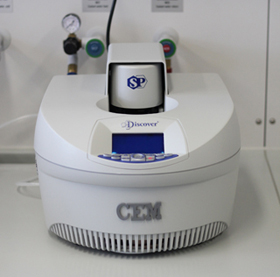
Microwave Reactor CEM Discover
The ability of microwaves to quickly heat resonant molecules like water, which is utilized in kitchen microwave ovens, may also be used in synthetic chemistry.
Mechanical Characterization
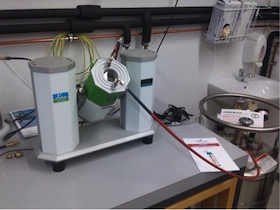
Dynamic Mechanical Analysis Perkin Elmer DMA 8000
Polymers can differ greatly in their mechanical properties. The DMA is used to measure the response of a sample to periodic mechanical stress.
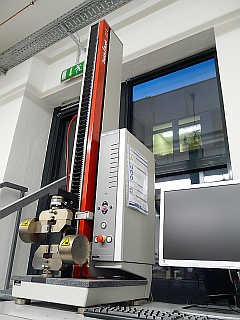
Tensile Testing Machine ZwickRoell Z2.5
A standard method of mechanical characterization of materials is tensile testing. In our materials-based projects, such investigations are done by means of the Z2.5.
Thermal Characterization
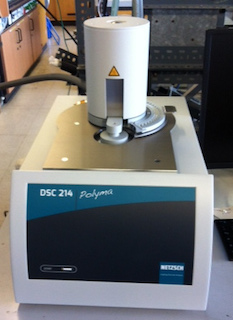
Dynamic Scanning Calorimetry Netzsch DSC 214 Polyma
A DSC system allows to monitor the heat flux to or from a sample while its temperature is varied in a controlled manner. This allows us to determine the melting temperatures of partly crystalline polymers, the glass transition temperatures of polymers, and the heat flux of polymerization reactions.
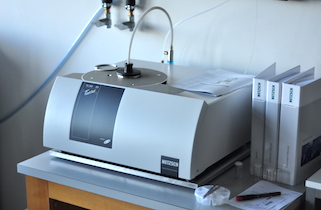
Thermogravimetric Analysis Netzsch TG 209 F3 Tarsus
Instead of monitoring the heat flux, in thermogravimetric analysis the change in mass of a sample is monitored while its temperature is varied. In this way it is possible to determine the relative content of a sample of thermally stable and of decomposable material, for example of polymer and silicon dioxide in a filled rubber.
Miscellaneous Equipment
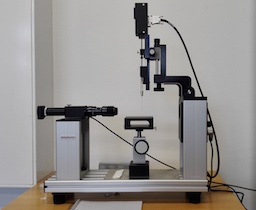
Contact Angle Setup Dataphysics OCA 15EC
One way of characterizing surfaces in terms of their hydrophilicity is to measure the contact angle with a water drop. This is exactly what this setup has been designed for.
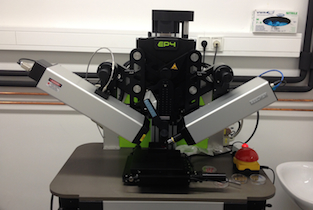
Accurion EP4 Imaging Ellipsometer
In ellipsometry, elliptically polarized light is reflected on a sample surface and the reflected light is analyzed in terms of its polarization. In this way, differences in the refractive index of a sample, typically some thin polymer film, may be mapped.
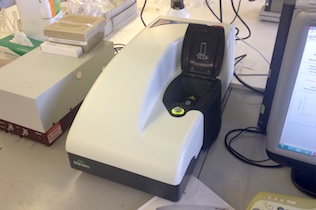
Dynamic Light Scattering Setup Malvern Zetasizer
In dynamic light scattering, a laser beam is scattered by particles dispersed in a liquid. From the variation of the intensity of the scattered light with time, particle size distributions may be derived.
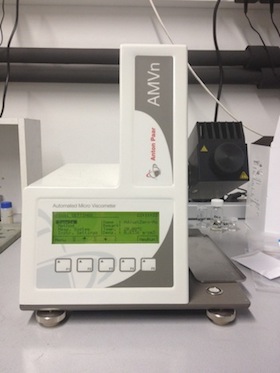
Viscometer Anton Paar AMVn
This machine measures the time it takes for a small steel sphere to pass through a capillary filled with the medium of interest, tyopically a polymer solution, and calculates the viscosity of the medium from that.
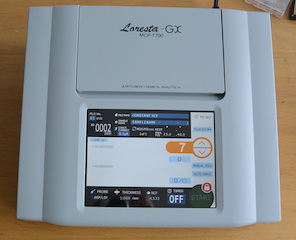
Resistivity Meter Mitsubishi Loresta GX
For research into electrically conducting polymers, we have this device that allows us to quickly measure the sheet resistance of polymer films.
